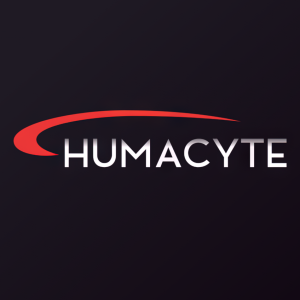Results from Humacyte’s V007 Pivotal Phase 3 AV Access Study Highlighted by Presentation at the Society for Vascular Surgery Meeting
Rhea-AI Summary
Positive
- ATEV demonstrated superior functional patency over autologous fistula in high-risk patients
- ATEV patients required fewer maturation and surgical revision procedures compared to AVF
- Safety profile comparable to AVF with similarly low infection rates
- Addresses unmet medical need for over 50% of dialysis access market (women and men with diabetes and obesity)
Negative
- ATEV showed higher rates of thrombosis and stenosis events compared to AVF
- Product still requires FDA approval for this specific indication
- Results pending publication in peer-reviewed medical journal
News Market Reaction 1 Alert
On the day this news was published, HUMA declined 1.16%, reflecting a mild negative market reaction.
Data tracked by StockTitan Argus on the day of publication.
Benefits of Humacyte’s Acellular Tissue Engineered Vessel Over Autologous Arteriovenous Fistula (AVF) in High-Risk Patients with End-Stage Kidney Disease Observed in Data Presented in Plenary Session
DURHAM, N.C., June 09, 2025 (GLOBE NEWSWIRE) -- Humacyte, Inc. (Nasdaq: HUMA), a commercial-stage biotechnology platform company developing universally implantable, bioengineered human tissue at commercial scale, announced today that the results from its V007 Pivotal Phase 3 clinical trial of the acellular tissue engineered vessel (ATEV™) in arteriovenous access for patients at high risk of autologous arteriovenous fistula (AVF) maturation failure with end-stage renal disease were presented in a plenary session at the Society for Vascular Surgery Vascular Annual Meeting (VAM25), held in New Orleans, LA, on June 6, 2025. Full details of the presentation are highlighted in a press release issued by the Society for Vascular Surgery, available here.
The results of the study, titled Acellular Tissue Engineered Vessel Outperforms Arteriovenous Fistula in High-Risk Patients on Hemodialysis: Results from the CLN-PRO-V007 Randomized Controlled Trial, were presented by Dr. Mohamad A. Hussain, MD, PhD, RPVI, FAHA, Vascular and Endovascular Surgeon-Scientist at Brigham and Women’s Hospital, Core Faculty at the Center for Surgery and Public Health, and Assistant Professor of Surgery at Harvard Medical School.
The CLN-PRO-V007 trial was a prospective, multicenter, two-arm, randomized controlled trial comparing the efficacy and safety of ATEV and AVF in end-stage kidney disease (ESKD) patients on hemodialysis (HD) undergoing single-stage surgical vascular access creation. AVF, a surgical procedure that connects an artery to a vein, is the preferred method for vascular access in hemodialysis patients because, when successful, it reduces long-term catheter use and associated complications. However, women and patients with obesity and diabetes are at higher risk of AVF maturation failure, meaning the fistula doesn’t develop adequately for use in dialysis, often resulting in prolonged catheter dependence and increased morbidity. The trial enrolled a total of 242 ESKD patients, of which 110 were specified as high-risk of fistula non-maturation (defined as all as females and males with a body mass index (BMI) ≥ than 30kg/m2 and having diabetes). Humacyte previously announced positive topline results from the trial in October 2024. As shown in the presentation, in this study ATEV was observed to have better functional patency, usability, and a comparable access-related complication profile compared to AVFs in this high-risk subgroup of patients. The safety profile of the ATEV was reported to be comparable to AVF, with similarly low rates of infections. The cohort of patients treated with ATEV had more thrombosis and stenosis events compared to AVF, however the majority were successfully treated. Patients treated with ATEV had a lower need for maturation and surgical revision procedures compared to AVF.
“Dr. Hussain’s presentation of our V007 trial data was one of only three selected for special mention by the Society of Vascular Surgery, and we are delighted that the Society chose to highlight the strength of this data,” said Dr. Laura Niklason, President and CEO of Humacyte, Inc. “In our V007 trial, the ATEV was observed to have superior functional patency over the autologous fistula control group not only in the overall study population but in the important subgroups of women and men with diabetes and obesity. These two groups make up more than half of the dialysis access market and are historically underserved by the current standard of care, representing a clear unmet medical need. We believe that the efficacy and safety results in the subgroup, combined with the approximately
For uses other than the FDA approval in the extremity vascular trauma indication, the ATEV is an investigational product and has not been approved for sale by the FDA or any other regulatory agency.
For more information on the Society for Vascular Surgery Vascular Annual Meeting (VAM25), please click here.
About Humacyte
Humacyte, Inc. (Nasdaq: HUMA) is developing an innovative biotechnology platform to deliver universally implantable bioengineered human tissues, advanced tissue constructs, and organ systems designed to improve the lives of patients and transform the practice of medicine. The Company develops and manufactures acellular tissues designed to treat a wide range of diseases, injuries, and chronic conditions. Humacyte’s Biologics License Application for the acellular tissue engineered vessel (ATEV) in the vascular trauma indication was approved by the FDA in December 2024. ATEVs are also currently in late-stage clinical trials targeting other vascular applications, including arteriovenous (AV) access for hemodialysis and peripheral artery disease (PAD). Preclinical development is also underway in coronary artery bypass grafts, pediatric heart surgery, treatment of type 1 diabetes, and multiple novel cell and tissue applications. Humacyte’s 6mm ATEV for AV access in hemodialysis was the first product candidate to receive the FDA’s Regenerative Medicine Advanced Therapy (RMAT) designation and has also received FDA Fast Track designation. Humacyte’s 6mm ATEV for urgent arterial repair following extremity vascular trauma and for advanced PAD also have received RMAT designations. The ATEV received priority designation for the treatment of vascular trauma by the U.S. Secretary of Defense. For more information, visit www.Humacyte.com.
Forward-Looking Statements
This press release contains forward-looking statements that are based on beliefs and assumptions and on information currently available. In some cases, you can identify forward-looking statements by the following words: “may,” “will,” “could,” “would,” “should,” “expect,” “intend,” “plan,” “anticipate,” “believe,” “estimate,” “predict,” “project,” “potential,” “continue,” “ongoing” or the negative of these terms or other comparable terminology, although not all forward-looking statements contain these words. These statements involve risks, uncertainties, and other factors that may cause actual results, levels of activity, performance, or achievements to be materially different from the information expressed or implied by these forward-looking statements. Although we believe that we have a reasonable basis for each forward-looking statement contained in this press release, we caution you that these statements are based on a combination of facts and factors currently known by us and our projections of the future, about which we cannot be certain. Forward-looking statements in this press release include, but are not limited to, the statements regarding the initiation, timing, progress, and results of our preclinical and clinical trials; the anticipated characteristics and performance of our ATEVs; our ability to successfully complete preclinical and clinical trials for our ATEVs; the anticipated benefits of the ATEV relative to existing alternatives; and the timing or likelihood of regulatory filings, acceptances and approvals. We cannot assure you that the forward-looking statements in this press release will prove to be accurate. These forward-looking statements are subject to a number of significant risks and uncertainties that could cause actual results to differ materially from expected results, including, among others, changes in applicable laws or regulations, the possibility that Humacyte may be adversely affected by other economic, business, and/or competitive factors, and other risks and uncertainties, including those described under the header “Risk Factors” in our Annual Report on Form 10-K for the year ended December 31, 2024 and the Form 10-Q for the quarter ended March 31, 2025, each filed by Humacyte with the SEC, and in future SEC filings. Most of these factors are outside of Humacyte’s control and are difficult to predict. Furthermore, if the forward-looking statements prove to be inaccurate, the inaccuracy may be material. In light of the significant uncertainties in these forward-looking statements, you should not regard these statements as a representation or warranty by us or any other person that we will achieve our objectives and plans in any specified time frame, or at all. Except as required by law, we have no current intention of updating any of the forward-looking statements in this press release. You should, therefore, not rely on these forward-looking statements as representing our views as of any date subsequent to the date of this press release.
Humacyte Investor Contact:
Joyce Allaire
LifeSci Advisors LLC
+1-617-435-6602
jallaire@lifesciadvisors.com
investors@humacyte.com
Humacyte Media Contact:
Rich Luchette
Precision Strategies
+1-202-845-3924
rich@precisionstrategies.com
media@humacyte.com









